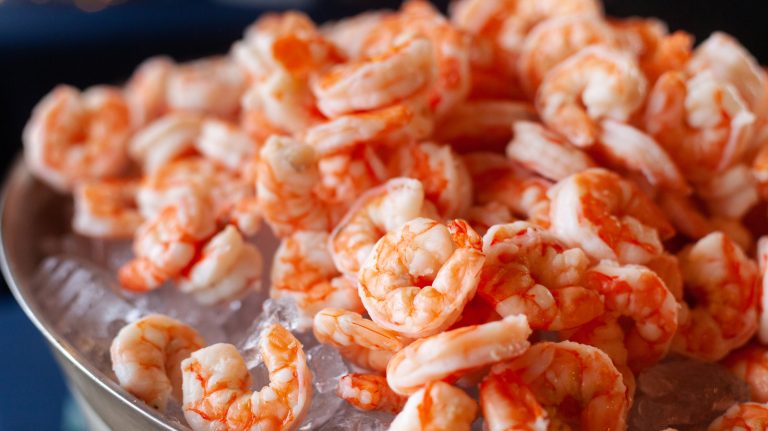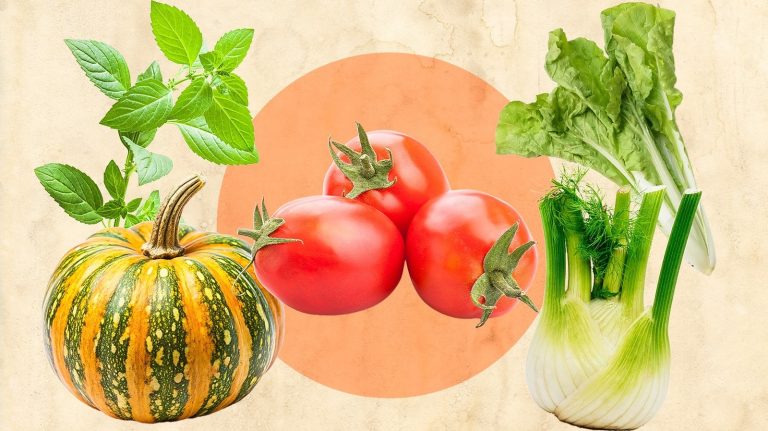If you’re a fan of Italian cuisine, and pasta in particular, you might have considered making your own. Shelling out for a pasta machine, however, it’s not an inexpensive commitment, and if you are only planning to use it occasionally, it may not be worth the investment. Thankfully, there is a cheaper, and more authentic way to make pasta in your own kitchen, by using traditional methods to shape it by hand.
Fabio Manfredi is Sfoglino at Lucciola Restaurant in New York City. A sfoglino is a traditional Italian pasta maker who crafts fresh pasta by hand, and Lucciola Restaurant is the only restaurant in New York City with a dedicated, full staffed, sfoglino. Fabio is passionate about making pasta by hand, and has shared his best tips for this article.
“All pasta shapes can be made without a machine, and in fact, they often turn out better this way!” he said. “Rolling by hand creates a more porous texture that absorbs sauces beautifully. Plus, making pasta by hand is a meditative, satisfying experience — you truly connect with the craft.” Whether you have made fresh pasta before or are just thinking about having a go, this article will guide you in the right direction. From classics such as tagliatelle and ravioli, to the lesser-known pici and strozzapreti, let’s get some expert insights on 11 pasta shapes you can make without spending $100+ on a machine.
1. Tagliatelle
If you are new to the art of handmade pasta, you are best to start with a straightforward shape, and Fabio Manfredi suggests that tagliatelle is the easiest to master. “One of the simplest and most rewarding shapes is tagliatelle,” he confirms. “Roll out the dough as thin as possible. You’ll know it’s ready when you can see the wooden board through it. Then, roll the pasta onto itself and cut it with a knife.”
The key to getting this classic shape just right is the rolling of the dough. If you are used to making your pasta using a machine, it may take a bit of practice to roll it out perfectly by hand. Take your time, as rushing it could lead to uneven pasta or cause it to tear. When you think you have rolled it thinly enough, carefully lift it onto your hand. If you can’t see your skin faintly through the pasta, it is not thin enough. Thin pasta creates a silky texture once cooked, so keep going until you have the translucent effect that Manfredi suggests.
Now it’s time to slice your tagliatelle into the familiar ribbons. Technically, they should be 6-7 millimeters wide, but you can judge it by eye, there is no need to get a ruler out. Handmade pasta should look rustic anyway, so do your best to cut them straight, but don’t overthink it. Fresh pasta takes a fraction of the time to cook as dried, so keep a close eye on it as it boils — 3-4 minutes should be enough.
2. Pappardelle
Pappardelle may be a ribbon pasta that is less well-known than its thinner cousins spaghetti and tagliatelle, but in Italy it is just as important. It originates in beautiful Tuscany, and the good news is, it is just as simple to make as the tagliatelle. The same process of rolling the dough extremely thin is crucial, then cut it into ribbons that are thicker than before. Your pappardelle should be at least 15 millimeters wide, but can be up to 25 millimeters if you prefer.
In Italy, pairing a pasta shape with a sauce is serious business, and pappardelle is usually matched to meaty sauces that will cling to the thick ribbons. Classic meat ragù is often served with this pasta shape, and once you have tasted the combination, you will understand the literal translation of pappardelle — to gobble up!
Although the pappardelle is wider than tagliatelle, it is roughly the same thickness, so will cook in around 4 minutes. This shape is designed to look rustic as part of a hearty meal, so there is no need to be too precious with the plating — simply mix it with the meat sauce to serve a generous portion, topped with a little fresh Parmesan.
3. Fettucine
Fettuccine is a much better-known pasta shape in this country, mainly due to the popularity of fettuccine Alfredo. It is another ribbon pasta, meaning it is easy to make without a pasta machine. Fettucine is narrower than tagliatelle, but only by a millimeter or so, usually measuring about 5-6 millimeters across. However, the pasta is rolled slightly thicker for fettuccine, giving it a different texture when cooked.
Getting the dough right is a crucial point when making homemade pasta, and Fabio Manfredi has a handy tip that may make it easier to shape the pasta by hand. “Softer dough is easier to roll,” he explains. “Traditionally, the ratio is 1 egg per 100 grams of flour, but beginners can add a little extra egg (around 60 grams per 100 grams flour) to make rolling easier.” If you decide to make your pasta dough in advance and chill in the refrigerator, make sure to remove it at least an hour before rolling to make it as soft and pliable as possible.
Once you have sliced your pasta into long thin ribbons, cook it in boiling water for 3-4 minutes. Mix it thoroughly with your sauce, then serve with a few torn basil leaves on top to contrast the creamy Alfredo sauce.
4. Ravioli
Once you have mastered simple pasta shapes such as the different types of ribbons, you may wish to move on to stuffed pasta, like ravioli. Don’t be tempted to jump straight in here first, as Fabio Manfredi advises. “Start with simple, unfilled pasta,” he suggests. “It’s easier to master rolling and cutting before moving on to stuffed pastas like tortellini or ravioli.” Once you have a few of the easy ones under your belt, you can have the confidence to challenge yourself a little.
Ravioli can contain meat, but often has a vegetarian filling, such as spinach and ricotta, or pumpkin and sage. You can fill them with whatever you like, just make sure to prepare the stuffing in advance and let it cool completely.
The first step in handmade ravioli is to make a large sheet of thinly rolled pasta, known as a sfoglia. The thinner the pasta, the better your ravioli will be, so persevere to make it translucent. Cut your pasta into thick strips, around 10-12 centimeters in width, and place two long strips alongside each other. If your filling is smooth, add to a piping bag and carefully pipe onto one of the strips of pasta, leaving 5 centimeters between each portion. If your filling is more chunky, carefully spoon it on instead. Delicately place another sheet on top, and press down around the edges to seal the ravioli. If you have a scalloped cutter, use it to cut your ravioli into squares, otherwise use a sharp knife. Your elegant parcels are now ready to be cooked for just a few minutes, before serving with your favorite sauce.
5. Cavatelli
If you fancy a handmade pasta that requires less time and effort in the preparation stage, Fabio Manfredi suggests making cavatelli. “For an even simpler Southern Italian approach, cavatelli are made with just semolina and water (no eggs), producing a fragrant pasta with great flavor and texture.” The simpler dough may make the overall pasta making experience less overwhelming, allowing you to focus more on shaping the pasta itself.
To make the dough for cavatelli, you need double-milled semolina flour, water, and a small amount of extra-virgin olive oil. Mix up 2 ½ cups of the semolina flour with ⅔ cup of lukewarm water, and 1 tablespoon of the oil, and knead into a dough. After around 5 minutes of kneading and letting it rest for 15 minutes, cut the ball into 6 sections, and roll out using your hands into ropes that have a width of about ½ inch.
The last step in creating cavatelli is to use your fingers, a butter knife, or a fork to create little bite-size pieces. Press down in the middle of each piece and roll it across the cutting board gently, causing it to roll into its distinctive shape. Once you have done a couple, the technique will be simple and satisfying. If you own a gnocchi board, use the same technique on the board to give them attractive ridges on the outside. Your cavatelli is now ready to cook in boiling water for 3-6 minutes, before serving in your favorite sauce.
6. Penne
Penne is a popular pasta shape, loved partly for how much sauce gets stuck inside it when you scoop it from your plate. At first, it may seem that penne would not be the ideal pasts to make by hand, but all you really need is something to roll it around and you can have perfect tubes without any fancy gadgets.
Start by rolling the dough out as thinly as possible. Fabio Manfredi points out that no specialist equipment is needed to get the dough just right. “All you need is a wooden rolling pin, a wooden surface, flour, and fresh eggs,” he explains. “Using a wooden rolling pin and board enhances the dough’s texture, creating a more absorbent surface that perfectly binds with sauces.” Once you have rolled your pasta thinly, cut into squares that are roughly 2.5-3 centimeters on each side. You then need to choose something to roll your pasta around — a thick skewer will give you a small, thin penne, but if you don’t have anything particularly thin, you can make large penne by using the handle of a wooden spoon. Lay one of your pasta squares on a floured surface, with the point facing toward you, then lay your chosen rolling implement on top of the point, and gently roll the pasta over the top, continuing to twist until you have a neat tube.
Repeat with all of your pasta squares until you have a lovely pile of handmade penne pasta, ready to cook. Cook for 3-4 minutes, then serve with a chunky sauce that can hide inside the tubes and surprise you with each mouthful.
7. Farfalle
If you’ve eaten the bow-tie pasta known as farfalle, you may assume that this shape is far too difficult to try making by hand, but in fact it is surprisingly simple. Assuming you own a rolling pin and a pizza cutter — though a knife can be used instead — then you can make pretty little pasta bows without too much effort.
As with most pasta shapes, start by rolling the dough into a large, thin square, then using the pizza cutter to cut into small rectangles that are the width you want your farfalle to be. Place one pasta piece flat on your hand, then pinch with the other hand to bring the top and bottom together in the center. This easy move will create the wings of the butterfly that the pasta is named after, and within a few minutes you will have a plate full of the delicate pasta shapes.
The butterfly shape of farfalle makes them a great option for getting kids involved in the pasta making process, too. Just because handmade pasta is a complex skill doesn’t mean you shouldn’t involve the youngest chefs in the family in the process, and Fabio Manfredi highly recommends it. “Make it a shared experience,” he suggests. “Some of my fondest memories are making pasta with my family, especially during the holidays. It’s not just about food, it’s about connection and tradition.”
8. Pici
Pici may be a lesser known pasta shape in this country, but it is a perfect one to try if you are just starting out with handmade pasta. It is more rustic than some of the other long pastas, meaning you don’t need the precise cutting skills, or any additional equipment.
To create pici, simply cut your ball of dough into smaller sections, then roll each one out into a long pencil-like shape. Ideally, the finished strand should be around 30 centimeters long and ½ a centimeter thick, but don’t worry if they are all slightly different. This is another pasta shape that even the youngest members of your family can help with — let them hone their modeling clay rolling skills on the real thing.
For a simple shape like this one, nailing the texture of the dough is key, and Fabio Manfredi has a few handy tips. “The texture of the dough is crucial,” he says. “Every flour absorbs moisture differently, so some trial and error is needed to find what works best for you. If the dough is too dry, add more egg; if too sticky, add a light dusting of flour.” To cook the pici, add to boiling water for around 3 minutes. A tomato-based sauce is a classic combination with pici, but pretty much anything will match well with these delightful pasta strands.
9. Orecchiette
Orecchiette translates literally as “little ears,” and as soon as you see them, you will understand why. Like a few other pasta shapes, orecchiette is excellent at trapping sauce inside the folds, creating a pleasing burst of flavor with every mouthful. While they may look complicated, with a little effort, you can have a bowl of handmade little ears on the table in time for dinner.
It starts, of course, by rolling the dough into a thin sheet, and Fabio Manfredi has a good tip for increasing the stretchiness of the dough. “Use egg whites for elasticity,” he suggests. “A dough made only with yolks will be harder to handle, so stick with whole eggs.” Once your dough has been suitably stretched as thinly as you can manage, it’s time to shape the ears.
Roll the pasta dough into a thick log, then cut into small pieces. For each one, press down with a knife, or simply your finger and push to curl it into the signature ear shape. Don’t worry about getting each piece identical, they are supposed to be rustic. If they all look different, you’re doing it right! This pasta shape goes well with tomato or cream based sauces that have small chunks to stick in the “ear” and create a fun tasting experience.
10. Fusilli al ferretto
Fusilli al ferretto is a variation on the tightly spiraled fusilli that allows you to make it easily at home. Originating in Calabria, it is made by wrapping the pasta around a long thin device known as a ferretto, but you can wrap it round anything you have handy, such as a skewer.
Create the dough as usual, and be sure to rest it before rolling to make it more manageable. “Let the dough rest,” says Fabio Manfredi. “If it keeps retracting, pause for 5 minutes to relax the gluten structure.” If you are not planning to use the dough straight after making it, he advises covering it with a damp cloth so that it doesn’t dry out. Roll the pasta by hand into long ropes, then use a rolling pin to roll each one into a thin sheet. Grab your ferretto or skewer, and gently wrap the thick layer of pasta around it, keeping it as tight as possible to get the ideal spiral shape. Slide it off the end, and voilà! You have your own handmade fusilli.
A hearty sauce such as a rich ragù or vegetarian mushroom sauce will match nicely with your fusilli, and don’t forget a healthy sprinkling of fresh Parmesan over the top. Fusilli ferretto is the epitome of southern Italian cooking — rustic, colorful, and utterly delicious.
11. Strozzapreti
Learning the literal translations of pasta shapes can be amusing, or in the case of vermicelli — little worms — a bit off-putting. The prize for the craziest name, though, surely has to go to strozzapreti, which translates as “priest stranglers.” The origin of the name is unclear but there are two main theories: the pasta is so thick that hungry priests could easily choke on it as they wolfed it down; or the housewives put a curse on the pasta as they made it in an attempt to choke the priests as they ate. Either way, the unusual name has stuck, and this rustic pasta shape is definitely achievable without the help of a pasta machine.
The good news is that this particular pasta shape doesn’t require the usual technique of rolling the dough into a paper thin sheet. If you find that process tricky, don’t be disheartened. As Fabio Manfredi reminds us, the more you practice, the easier it will become. “Pasta-making is a skill that takes time,” he reassures us. “Don’t get discouraged! Rolling dough with a pin requires practice, but the results are worth it.”
For strozzapreti, however, the process is a little simpler. Roll a section of pasta into a long rope, then cut into smaller pieces. Twist each small section with your hands, and that’s it! You can twist them as much or as little as you want, and there is no need to try and make each one the same — this is rustic Italian cooking at its best.





